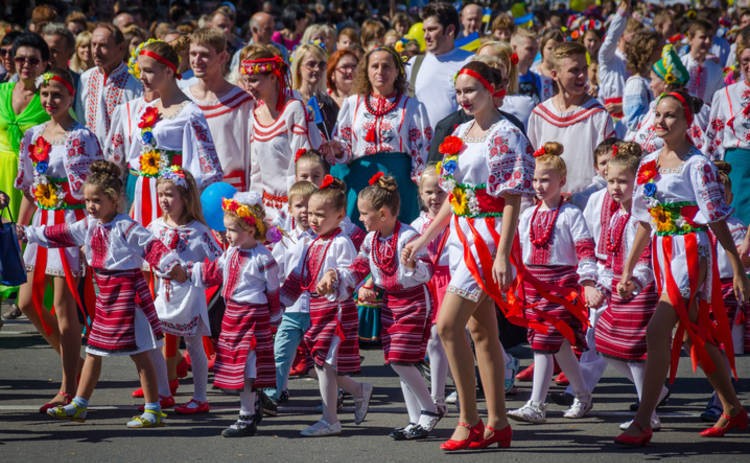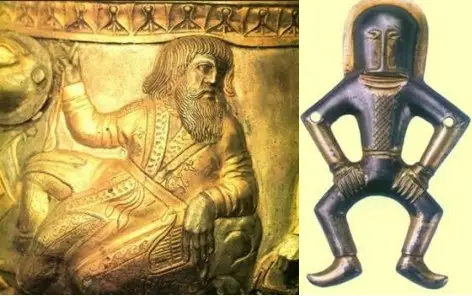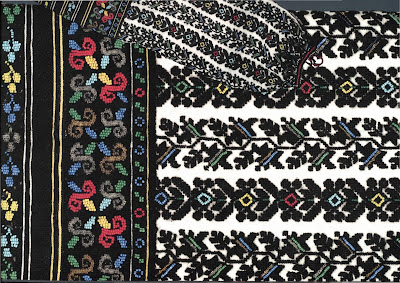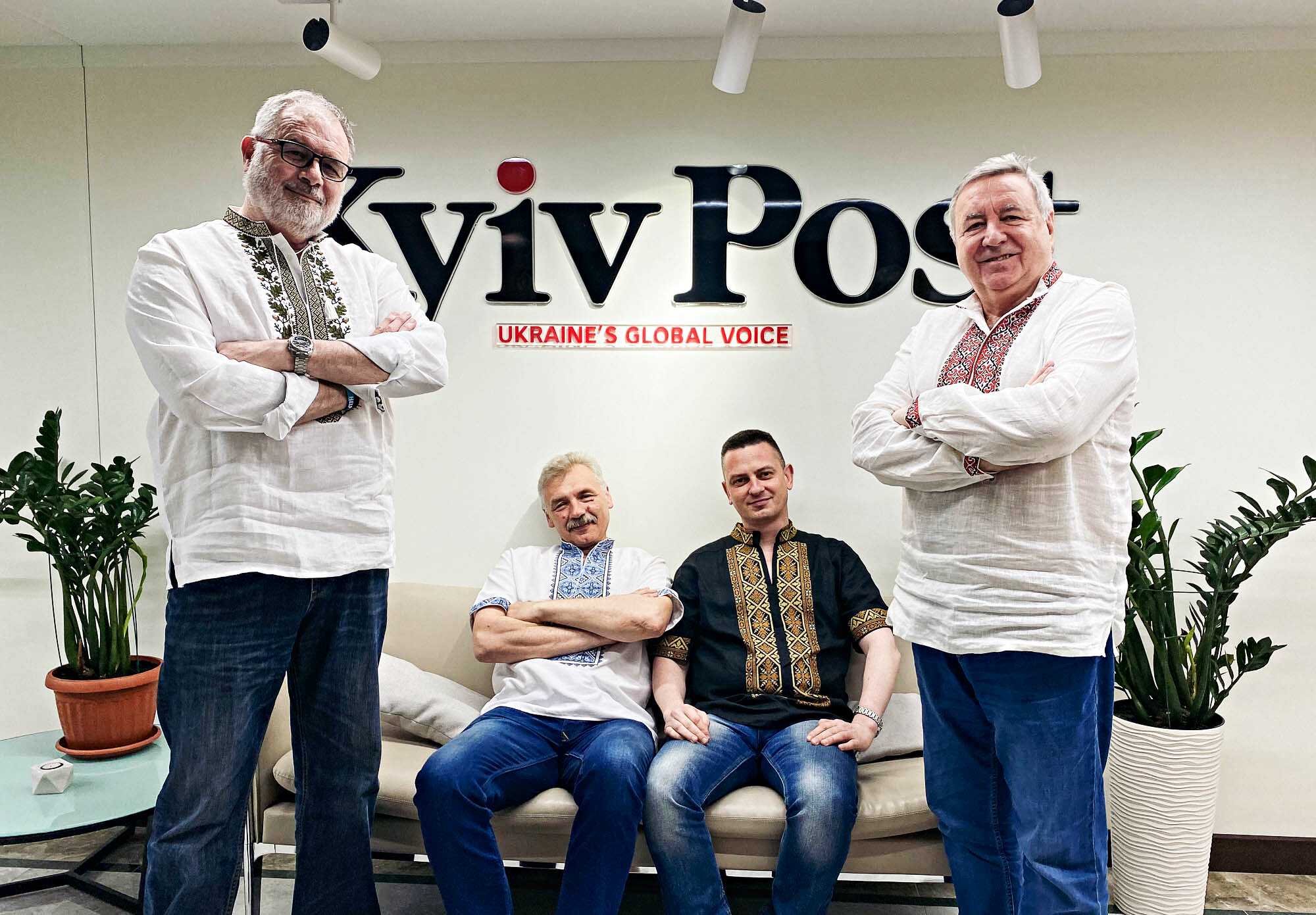On May 18, Ukraine and the world celebrate Vyshyvanka Day. A vyshyvanka is an embroidered fabric, and on Vyshyvanka Day, Ukrainians wear traditional embroidered clothing.
It’s a young holiday. It began to be celebrated only in 2006 and quickly became very popular. It is celebrated in 60 countries where the Ukrainian diaspora is present. Kyiv Post has collected some interesting facts about the embroidered code of Ukrainian identity.
Vyshyvanka Day is celebrated in 60 countries of the world
JOIN US ON TELEGRAM
Follow our coverage of the war on the @Kyivpost_official.
Vyshyvanka Day has a special significance this year, as Russia continues its full-scale war against Ukraine. The embroidered shirt worn on May 18 became another symbol of the indomitable Ukrainian spirit, a statement to the whole world that Ukrainians are a free people.
President Volodymyr Zelensky sets the trend for embroidery. His khaki shirts with symbolic patterns date back to Kyivan Rus. Tanks and armored personnel carriers are becoming popular embroidered images among Ukrainians. The olive drab shirts worn by the Commander-in-Chief of the Armed Forces Valery Zaluzhny and have become the color of the season – not to mention woodland and pixelated camouflage patterns. The famous explosive sniffing dog Patron also has an embroidered shirt. Indeed, Ukrainians joke that pixelated camo is just embroidery run amok.
Valery Zaluzhny with gifted vyshyvanka. Photo: Facebook

Zelensky Says Ukraine Military Aid Not Part of US 90-Day Aid Suspension
Today, vyshyvanka is experiencing a renaissance, because Ukrainians are more united than ever in supporting their own traditions. Elements of Ukrainian embroidery are increasingly seen in collections by global fashion houses, and Hollywood stars are also eager to wear them.

British businessman Sir Richard Branson
Ancient origins
Ukrainian embroidery has an extremely ancient origin. Embroidered clothes and similar patterns are found on vases from the Scythian period (4th century BC) and in the graves of Sarmatians (1st century AD) during excavations. Even gold-embroidered shirts have been found. Archeologists assert that they must have been very valuable to be placed in graves.

The most ancient finds. Photo: spadok.org.ua
The first vyshyvankas were not so much items of clothing as amulets against evil and misfortune. That is why shirts were decorated with different patterns on sleeves, collars and hems – wherever they touched the body. There was a special embroidery for each ritual. Children were given an embroidered shirt at birth to protect them from evil spirits.

Ukrainian children in their best outfits. Collection Honchar Museum
In the past, girls learned to embroider from the age of five. Brides had to embroider a shirt not only for themselves but also for their grooms. And at the wedding, the groom wore a shirt embroidered by his mother, and then a shirt embroidered by the bride.

Ukrainian wedding
For Ukrainians, the vyshyvanka was never an everyday garment. In times before the advent of modern washing machines and detergents, it took months to create one shirt, so was very impractical to wear an embroidered shirt every day. Everyday shirts were not decorated with anything at all.
Regional differences
Each region of Ukraine has its own embroidery features. In total, there are about a hundred embroidery techniques in Ukraine. Until 1860, techniques such as low stitch, top stitch, goat stitch and other types of stitches were popular in Ukraine.
Motifs found in Ukrainian embroidery with geometric patterns are thought to be the oldest: various rhombuses, zigzags, circles, wavy lines, meanders, spots, etc. At the same time, such embroidery techniques as “straight-smooth” and “retyaz” (a type of cross) were used – the latter being especially popular in western Ukraine.
One of the most original embroideries is Borshchivskaya, it comes from the Borshchiv district in Ternopil. This shirt is embroidered with black threads. There is a legend that when the Turks and Tatars destroyed almost all the men in Borshchiv, the women of this and neighboring settlements for several generations wore only such black and white shirts as a sign of mourning.

A sample of Borshchivskayaya embroidery
The “white on white” technique is unique to embroideries from the Poltava region. The preparation for needlework embroidery would be started three years before the beginning of the creation of the pattern. The main and longest process was the bleaching of threads.
Poltava vyshyvanka
In ancient times, in order to obtain dazzling linen with a frosty pattern, embroiderers from Poltava came up with a method of spreading threads on the banks of rivers during the hottest days. That way the four elements – water, sun, air, earth – “charged” the threads. And from a practical point of view, the river reflected the sun’s rays well, and the threads would naturally fade into their snow-white hue.
Organic origins
Before the advent of artificial aniline dyes, embroiderers used exclusively natural dyes obtained from decoctions and tinctures of herbs, bark, flowers, and fruit juice. For example, all shades of yellow were obtained from wheat straw. For the tone to be golden, these threads were baked in rye dough. Heat treatment in combination with steam fixed the color.

Patron, the explosive-sniffing dog
Vyshyvankas were divided by color. Black embroidered jackets were worn exclusively by men. Blue embroidered shirts were in the wardrobe of women who did not want or could not give birth, or girls up to 12 years old.
Today, Ukrainians, whether at home, in places of temporary refuge, or in the large diaspora, proudly where their embroidered garments as an affirmation of their cultural heritage and sense of national pride.
Kyiv Post kozaks
You can also highlight the text and press Ctrl + Enter










